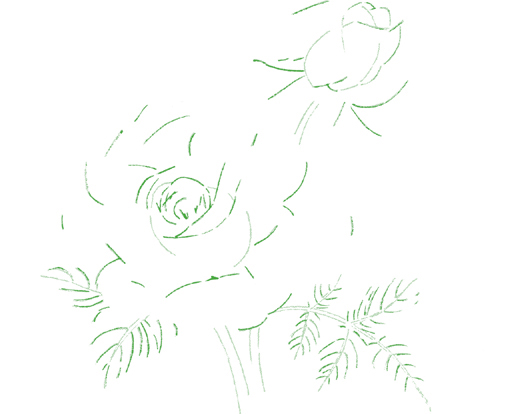BOOKS IN THIS SERIES
Draw 50 Airplanes, Aircraft, and SpacecraftDraw 50 AliensDraw 50 Animal ToonsDraw 50 AnimalsDraw 50 AthletesDraw 50 Baby AnimalsDraw 50 BeastiesDraw 50 BirdsDraw 50 Boats, Ships, Trucks, and TrainsDraw 50 Buildings and Other StructuresDraw 50 Cars, Trucks, and MotorcyclesDraw 50 CatsDraw 50 Creepy CrawliesDraw 50 Dinosaurs and Other Prehistoric AnimalsDraw 50 DogsDraw 50 Endangered AnimalsDraw 50 Famous CartoonsDraw 50 Flowers, Trees, and Other PlantsDraw 50 HorsesDraw 50 Magical CreaturesDraw 50 MonstersDraw 50 PeopleDraw 50 PrincessesDraw 50 Sharks, Whales, and Other Sea CreaturesDraw 50 VehiclesDraw the Draw 50 Way Copyright 1994 by Jocelyn S. Ames and Murray D. Zak All rights reserved.
Published in the United States by Watson-Guptill Publications,
an imprint of the Crown Publishing Group, a division of
Random House, Inc., New York, in 2012.
www.crownpublishing.com WATSON-GUPTILL and the WG and Horse designs are registered trademarks of Random House, Inc. Originally published in hardcover in the United States by Doubleday, a division of Random House, Inc., New York, in 1994. Library of Congress Cataloging-in-Publication Data Ames, Lee J.
Draw 50 flowers, trees, and other plants / Lee J. Lee Ames. 1st ed.
p. cm.
1. cm.
1.
Flower painting and illustrationTechniqueJuvenile literature.
2. Flowers in artJuvenile literature. 3. Plants in artJuvenile literature. [1. 2. 2.
Flowers in art. 3. Plants in art.] I. Ames, P. Lee (Parsis Lee) II. III. III.
Title: Draw fifty flowers, trees, and other plants.
NC805.A43 1994
743.7dc20 94-7192 eISBN: 978-0-7704-3292-8 v3.1 To Jocelyn,
who makes things
beautifully verdant
always.
Contents
Authors Note
In recent books, I have worked with artists whom I consider to be superbly talented. All are top achievers and craftspeople, highly acclaimed by their colleagues and fans and some have names and work you may recognize. This way we are making available to you other styles of drawing, techniques that are different from my own. With that in mind, I consider myself very lucky to have been able to persuade Persis Lee Ames to join with me in creating this book. P.
Lee Ames studied extensively at the Museum of Fine Arts in Boston and at the Art Students League in New York City. She then entered the commercial art field and developed a career in advertising, book illustration, jewelry design, and silver and greeting cards for Tiffany & Co. Now that her children are grown, she works full-time on commissions for portraits, landscapes, and murals for interior designers and private clients. Her work can be found in private collections here and in Europe, and has been featured in major magazines and newspapers. Mrs. Ames considers herself an illustrator of nature and a realistic painter.
Flora is her specialty. She also excels in imaginative and whimsical trompe loeil and faux finishes. Recently she has studied at the Isabel ONeil Studio in New York City, famed for its accomplishments in decorative arts. Her portrait paintings, murals, and screens demonstrate the artistic talents of this truly Renaissance woman. And in case youre wondering, Persis and I are not related.
Tothe Reader
To be able to see and enjoy what you are seeing is much to be grateful for.
But even more, being able to reproduce and convey to others, by drawing, what you see or imagine provides greater satisfaction. As in all my books, my purpose and pleasure are to show others, like yourself, a way to construct drawings. This world is full of glorious things to see. I think youll agree that the flowers, fruits, trees, and the rest of the subject matter here are testament to our beautiful world. In my earlier books, living subjects were all chosen from the animal kingdom. The other major kingdom in the tree of life is the vegetable kingdom, and almost all the drawings in this book are from there.
The only exception is the mushroom, which is one of the Fungi. When you start working, I suggest you use clean white bond paper or drawing paper and a pencil with moderately soft lead (HB or No. 2). Keep a kneaded eraser handy (available at art supply stores). Choose the subject you want to draw and then, very lightly and very carefully, sketch out the first step. Also very lightly and carefully, add the second step.
As you go along, study not only the lines but the spaces between the lines. Size your first steps to fill your drawing paper agreeably, not too large, not too small. Remember the first steps must be constructed with the greatest care. A mistake here could ruin the whole thing. As you work, its a good idea to hold a mirror to your sketch from time to time. The image in the mirror frequently shows distortion you might not recognize otherwise.
You will notice that new step additions (in color) are printed darker. This is so they can be clearly seen. But keep your construction steps always very light. Heres where the kneaded eraser can be useful. You can lighten a pencil stroke that is too dark by pressing on it with the eraser. When youve completed all the light steps, and when youre sure you have everything the way you want it, finish your drawing with firm, strong penciling.
If you like, you can go over this with India ink (applied with a fine brush or pen) or a permanent fine-tipped ballpoint pen or a felt-tipped marker. When the drawing is thoroughly dry, you can then use the kneaded eraser to clean out all the underlying pencil marks. Remember, if your first attempts at drawing do not turn out the way youd like, its important to keep trying. Your efforts will eventually pay off, and youll be pleased and surprised at what you can accomplish. I sincerely hope youll improve your drawing skills and have a great time drawing these beautiful plants. L EE J.
A MES
 RoseFamily: RosaceaeGenus:Rosa
RoseFamily: RosaceaeGenus:Rosa











